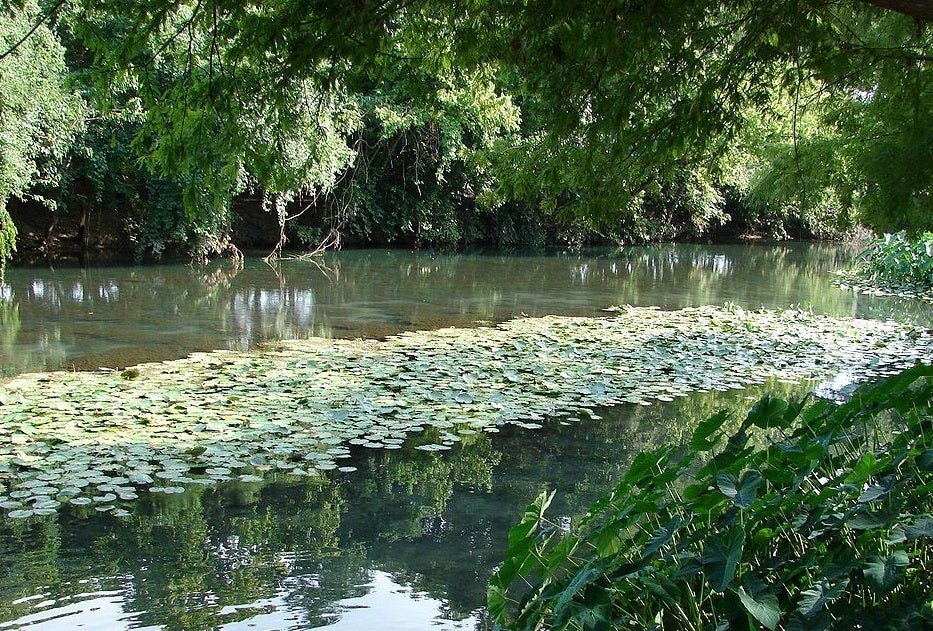Wells and springs are drying up in Texas. Here is what leaders can do about it.
Millions of Texans are in danger of seeing their water supplies dry up as groundwater is being pumped out of aquifers across the state at an unsustainable pace.
Fortunately, there is still time for Texas to turn the tide and preserve groundwater for future generations.
Those are the conclusions of a new pair of reports released by EDF and the Meadows Center for Water and the Environment at Texas State University.
The first report Five Gallons in a Ten Gallon Hat: Groundwater Sustainability in Texas by Robert Mace, executive director of the Meadows Center, shows Texas is losing groundwater at nearly twice the maximum sustainable rate. Moreover, according to long-term management plans approved by local groundwater agencies, overpumping is likely to increase in coming years unless officials change course.
A second report co-authored by EDF, Advancing Groundwater Sustainability in Texas: A Guide to Existing Authorities and Management Tools for Groundwater Conservation Districts and Communities, lays out a path for addressing the looming groundwater crisis utilizing existing law.
Groundwater districts have authority to act.
During a recent media briefing on both reports, I highlighted how groundwater conservation districts (GCDs) — local agencies charged with managing and protecting groundwater supplies, especially in rural areas — are authorized by state law to implement a variety of tools that would help them better manage groundwater supplies.
Key tools at their disposal include:
- The creation of management zones.
- Drought triggers.
- Production curtailments.
- Incentive programs that encourage landowners to keep groundwater underground.
The good news is groundwater districts are leveraging some of these measures to protect groundwater as well as rivers, streams and springs above the ground fed by groundwater. For instance, the Hays Trinity GCD has developed drought triggers to protect groundwater supplies and Jacob’s Well. Meanwhile, the Post Oak Savannah GCD recently implemented a new program to encourage conservation and stewardship of groundwater through economic incentives for landowners to place their groundwater into a district-managed conservancy.

Texas is managing groundwater toward depletion
Unfortunately, analysis by the Meadows Center shows that Texas is currently allowing the slow and eventual depletion of our aquifers.
Excluding the Ogallala Aquifer, the long-term management goals adopted by groundwater districts allow groundwater pumping to total 6.3 million acre-feet per year — nearly twice the maximum sustainable rate of 3.3 million acre-feet per year.
Groundwater is being pumped out of the Ogallala, the primary source of water for Texans in the High Plains and Panhandle regions, 6.5 times faster than its maximum sustainable rate.
The takeaway from this analysis is that groundwater management is headed in the wrong direction in Texas. Indeed, Mace notes that wells and springs in some areas, including parts of the Hill Country outside Austin, are already going dry more frequently than they once did.
Groundwater management in Texas is headed in the wrong direction, but groundwater agencies have the authorities and tools to reverse this alarming trajectory. Share on XInaction threatens people, property rights, economies and ecosytems.
This trend toward groundwater depletion threatens to wreak havoc on not only rural landowners and communities, Texas’ broader economy, and key industries such as farming and ranching, but also the state’s treasured rivers, streams and springs. During dry periods, groundwater sustains as much as 30% of the water in river and creek basins — a critical figure that will decline if the state can’t get groundwater pumping under control.
But it’s not too late. As we outline in our report, Texas has established a framework that gives groundwater agencies the authorities and tools to reverse this alarming trajectory. Groundwater agencies need better data to inform decisions, as well as the commitment and community support to manage this critical natural resource in a more sustainable way. In addition, the state should provide funding to groundwater districts for long-term planning, which will be crucial to managing groundwater resources sustainably in the future.










